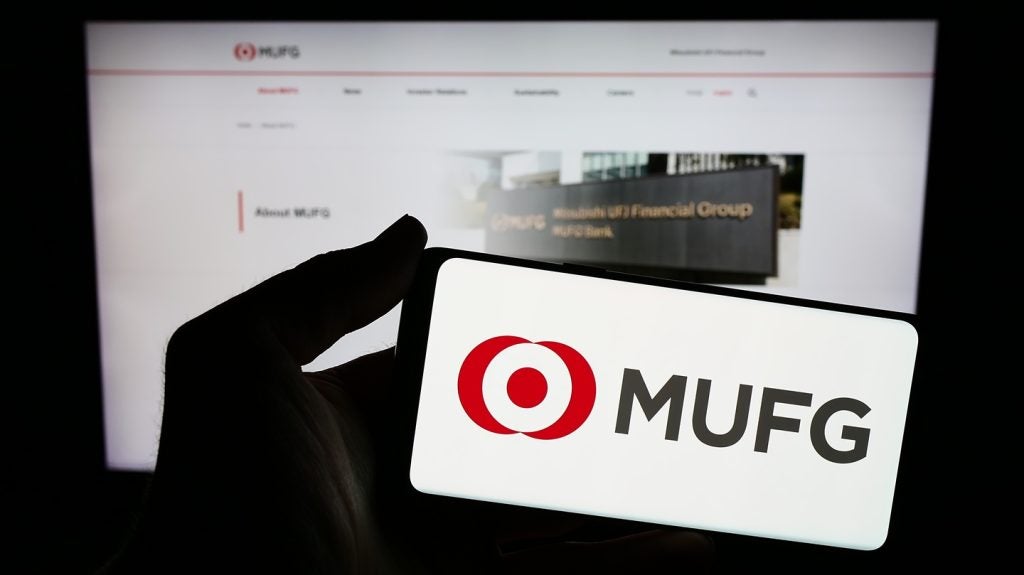The Digital Banking Club’s latest debate, at the formidable Law Society HQ in London, honed in on the Internet of Things and how it could aid financial services. The discussion covered a number of trends, including payments, wearables and customer needs. Patrick Brusnahan reports
Before an enthusiastic full house and a high-level panel comprising the newly published Digital Banking Club Power 50 and Rising Stars, the Digital Banking Club’s live debate focused on just how the Internet of Things (IoT) might benefit financial services.

Access deeper industry intelligence
Experience unmatched clarity with a single platform that combines unique data, AI, and human expertise.
While the IoT may seem to some as a concept straight out of science fiction, Simon Cadbury, director of strategy and innovation at Intelligent Environments, said the reality was closer than many think.
He said: “The Internet of Things is not the future, it is the here and now. Banking was one of the first industries involved with IoT, via the ATM. There are exciting opportunities out there that will be realised. Payments are obviously an area with a lot of opportunity.”
Kate Frankish, head of payments strategy at Tesco Bank, agreed: “Payments are an essential part of the Internet of Things.”
Teppo Paavola, chief development officer and general manager of new digital businesses at BBVA and The Digital Banking Club Power 50’s Personality of the Year 2016, commented: “In [BBVA’s] open platform, one of the most popular APIs was our payment stats one. You can do a lot with data. Banking has always been about data. The analytics have changed and the Internet of Things allows us to do the same things better as well as new things.”

US Tariffs are shifting - will you react or anticipate?
Don’t let policy changes catch you off guard. Stay proactive with real-time data and expert analysis.
By GlobalDataFrankish added: “Data is difficult because we have so much of it. It’s about getting the right mix.”
“What has worked in the Internet of Things has been solving the problem of inconvenience. What if everything can be done with your thumbprint at home?”
Richard Rowntree, the outgoing head of specialist banking at RBS Williams & Glyn and shortly to assume the role of MD Mortgages at Bank of Ireland, said: “There’s a generational issue. You need multiple channels for different customers. You need a wide service offering. To convince people, it’s about what they miss if they don’t have the Internet of Things.”
Rowntree continued on the benefits of the Internet of Things. He said: “We will be the last generation to know so little about our health. And if every house was connected, burglary would be nearly impossible.”
Shashi Bhat, head of EMEA digital banking at Citi, warned that banks should not get ahead of themselves when applying this technology.
“We need an air of caution. Success and failure are not based on certain use cases, but on standards. Mobile payments became competitive and never really got standards going,” he said.
Cadbury concurred: “The biggest barrier would be if consumers don’t trust the Internet of Things.”
Ankit Chhajer, digital lead – customer experience design and sales innovation – at Royal Bank of Scotland (RBS), said that it could be utilised for a multitude of things.
“The fundamental truth is that it’s about what customers want. The Internet of Things collects a real-time view. It makes customer pinpointing better,” Chhajer said.
Bhat added: “The benefit of being a large company is being able to play in all spaces. There are some stunning use cases. We are all consumers of the IoT, if anything.”
A chance to experiment?
In November of last year, BBVA agreed to purchase a 29.5% stake in digital-only UK start-up Atom Bank. The chair of the debate, Douglas Blakey, asked Paavola if Atom gave BBVA a chance to experiment with the Internet of Things.
Paavola said: “I hope both BBVA and Atom have learned, and can learn, from each other. Every bank needs an opinion on open banking. But it wasn’t just Atom that attracted us: it was the UK. The UK is digital friendly, digital adoption is quick.”
The banking sector is often described as one of the most trusted industries, but how long will this last?
“In the UK, people hate the banks, but they also trust the banks. People do not really own their data. We’d like to, but this is a continuing discussion. How is all of this going to be controlled?” Paavola continued.
“It’s too easy to sit back and assume we have the trust. When you work with all of the big technology companies, they will eventually be trusted. They’ve seen that.
“Also, don’t think that banks are so much better at security because the top technology companies are very good at security. Banks will eventually get their security from them. If they have this agility, and if our great security is just a perception, they will be trusted because they know so much about me and they do it in a nice way. It might be only a matter of time.”
“Younger generations understand the pitfalls of data,” explained Frankish. “Data protection could, however, become more complex than it already is.”
Rowntree added: “There will be privacy concerns that scare people. You’d be surprised the AMOUNT of information that people give away.”
However, despite the risks, Rowntree fully believed that the Internet of Things was something that banks needed to take up.
“There is a completely new opportunity out there. If we don’t do this, competitors will,” he argued.
The payments space
A comparison started to grow between the Internet of Things and payments: not only how their developments were similar, but how they could link.
Bhat summarised the argument: “A lot of non-bank players invaded the payments space first, but are working into the Internet of Things now.”
A lot of industries have embraced the Internet of Things. Cadbury said: “Insurance is the industry benefitting most from the Internet of Things at the moment. Auto-finance is ripe for the Internet of Things.”
“I’d like to see more collaboration between fintech and medical technology,” Rowntree added.
Frankish said: “It will help for education, financial and otherwise.”
However, Bhat believed that its full potential had not even been realised yet.
“Payments appear to have the biggest use case for the Internet of Things,” he said.
“It would be arrogant to think that we can compete with the best technology companies out there. The best technology companies are far more out there, they have cutting edge technology. The idea that banks have the best technology is long gone. We do offer challenges in terms of scale. That face does attract technology companies.”
Have banks tried to hire experts from technology companies? Is that the way forward to make banks more like fintech start-ups?
Simon Cadbury said: “You can try to recruit specialists, but technology is changing so fast, it’s better to find someone with the right mindset and the ability to learn, as they can adapt and move on.”
“Over the last five years, we have noticed it has to be an amalgamation of different skills,” Frankish added.
Signing up for an account
One area the IoT would make drastically easier is identity verification or account sign-up.
Frankish said: “Imagine a world where a customer has a digital passport that tells people who you are. You can go onto an application and tick it and then it instantly knows it is that person. It’ll save reams of paper trails. There is so much data out there, we expect banks to be clever about it.”
“You’ve got so much. You’ve got device profiling, you’ve got geo-location, if you can somehow reach all that and add social media as well, you can make everything much easier” Chhajer continued.
“Only about 25% of our customers, maybe a maximum of 30%, will have a happy experience opening an account.”
Rowntree added: “It gets interesting as utilising data and the Internet of Things starts to remove barriers to switching. If the Internet of Things simplifies the application process, it opens the door to account switching.”
Will we be allowed to do this?
One of the final points revolved around consent – mainly users’ consent in how banks and other companies utilise their data.
Frankish stated: “Banks have to adhere to conduct regulations. Conduct is about how we treat these people and their data. It has opened up into a wider capability. We’re not sure we need to change the way we do things, but we need to understand the wider implications of data and how that fits into conduct.”
Rowntree joked: “I don’t think we need to think about it too much because the regulator thinks about it a lot.”
Cadbury concluded: “It’s a good point and it’s a point that can get quite complicated. It’ll take them time to work these things out though.”
The panel
Douglas Blakey, Timetric
Douglas is the group editor of consumer title at Timetric, as well as chief of judges for the annual Retail Banker International Awards and lead market adviser for Timetric’s retail banking research division.
He practiced as a solicitor in Scotland before moving into business information and analysis. He maintains an editorial advisory board of leading bank executives, and is a regular guest banking analyst with the BBC, the New Statesman and other leading media outlets.
Shashi Bhat, Citibank
Shashi is head of digital banking for Citibank in London and is responsible for digital functionality and customer engagement. He has worked extensively in the digital arena for over a decade in India, Germany, and the UK, across marketing, content and platforms for retail banking, launched apps, payment gateway products and next-generation internet banking solutions.
He has a background in sales which has given him extensive experience in process digitisation and the customer experience.
Ankit Chhajer, RBS
Ankit is digital lead – customer experience design and sales innovation – at Royal Bank of Scotland. He delivers compelling, sustainable digital experiences, propositions and proofs of concept. He also helps to inform and direct the future strategy for the bank. He is an agile practitioner, transforming digital and mobile journeys, and an experienced omni-channel and user experience enabler. Prior to RBS, Chhajer graduated from GECRC with a B.Eng. in engineering and was vice-president of operations – global graduate internship programme at AIESE.
Kate Frankish, Tesco Bank
Kate has worked in various financial services roles for over 20 years, and has been with Tesco Bank for the last five. She successfully managed the product development of Tesco Bank’s personal current account, from its initial ideation stage through to delivery of the final customer proposition. In the PCA programme, she led the development of the business case and managed the commercial team to deliver all aspects of the target operating model. Frankish now heads up the payment strategy and authorisations team.
Teppo Paavola, BBVA
Teppo has been at BBVA since May 2015 and is head of investing and launching new digital businesses.
Before joining BBVA, He served as head of global businesses and M&A at PayPal. He served as vice-president and general manger of mobile financial services at Nokia, director of Respect Ventures Group, and is an experiences finance specialist. As a founder/CEO of five start-ups, his finance experience stems from different positions at GE Capital in London, Stockholm and Helsinki.
Richard Rowntree, Future Williams & Glyn, RBS (Bank of Ireland from November 2016)
Richard is the outgoing head of specialist banking for Williams & Glyn. Previously, he headed up the mortgage business across three major UK banks. Richard began his career with Halifax, before moving to Lloyds. Prior to his current role, he was national director for Santander’s mortgage business. In November, he will join Bank of Ireland as MD, UK Mortgages.







